Learn the secrets of keeping clients on side
Tom Dougherty shares his tips for ensuring a smooth ride for you and your clients on digital creative projects.
Something we all know is that delivering great work on time and on budget is key to maintaining healthy relationships with the businesses and clients you work with. The value of clear communication for strengthening those relationships should not be underestimated. When embarking on a new project or client engagement, it's important to remember that you're taking the client on a journey with you, and sometimes into the unknown.
As a UX professional, I spend the majority of my time convincing the clients we work with to be customer focused, and to think and communicate from the perspective of their users. As an industry it's time we applied that same philosophy inwards to help improve the working relationships we have with our own customers.
Here I'll share my thoughts on how to keep clients engaged throughout the project lifecycle, a few techniques to ensure client comprehension as well as things to steer clear of. As with any good plan, fundamentally, it comes down to ensuring your client knows where they're heading, how you're going to get them there and what the outcome will be.
Clear communication
It sounds obvious, right? But you'd be surprised how often this is neglected. As playwright George Bernard Shaw once said, "The single biggest problem in communication is the illusion that it has taken place." This statement was highlighted to me recently while going through the process of buying a new car. I encountered a series of uncomfortable situations as a customer through my lack of knowledge. After a couple of early conversations with different car dealers I quickly realised I had no idea what I was being asked when it came to defining my requirements. "Is it a 1.6 or 1.8 you're after? Are you looking for HP or Part Ex? Transmission type? Have you considered the GTI?" Erm...
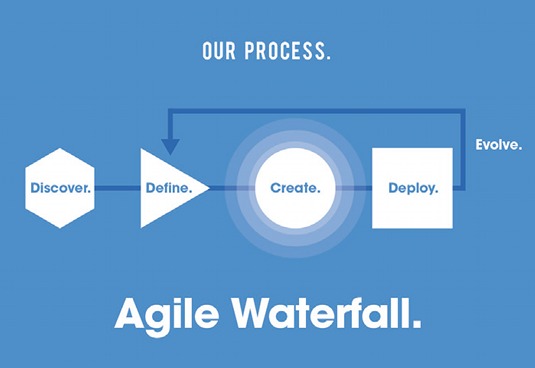
Not wanting to be exposed as a total novice, I took the classic intimidated customer approach of blagging my way through the questions, gradually revealing my ignorance. What I realised was that, as a customer, I wasn't offered a tailored customer experience matched to my knowledge level.
Rather than spotting this and guiding me through the conversation, the car dealer took it upon himself to reel off streams of acronyms and jargon that didn't resonate with me whatsoever. This situation forced me to evaluate whether the way we, as experts in our field, are communicating with our customers. Is our communication sufficient and is there more we can do to ensure our clients are truly in touch with the processes and programs we are taking them through?
The appraisal
Before engaging on any digital project with a client, it's well worth evaluating their digital knowledge level. Usually you'll be able build a picture of this with very little probing throughout the sales and negotiation stage. Start with simple things like evaluating the quality of the brief you've been supplied or asking the client to declare the individuals who will be working on the project from their side. Some clients will have a full digital team who are well versed in digital activity whereas others will have no single team member specifically dedicated to managing digital projects and, therefore, will probably lack experience.
Get the Creative Bloq Newsletter
Daily design news, reviews, how-tos and more, as picked by the editors.
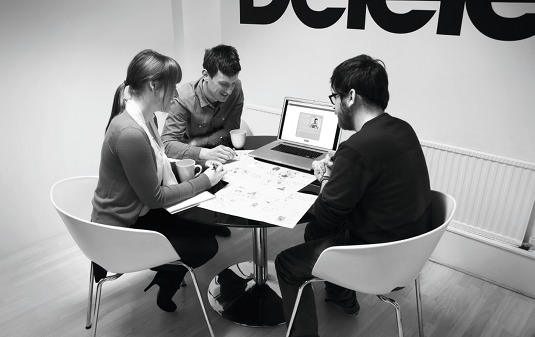
Understanding this knowledge level early on, and assessing the level of hand-holding that will be required throughout the project, will allow you to design a project process around them and enforce some steps at the beginning to provide some basic education. You shouldn't be afraid to raise any concerns you have about the level of understanding with your client as long as you have some methods in place to overcome this.
Possible preliminary steps you could offer include running an introductory workshop where you can introduce the basic principles of website and/or app design and all that's considered. Also provide a printed glossary 'dummies' guide' handbook that clarifies key terms that may well come up throughout the project, such as SEO, UX and responsive web design. Another valuable approach is to run a project inception meeting. It's a great way to kick off a new project with your client. inception meeting
The session should be used to introduce the main project stakeholders and their responsibilities from both sides - ensuring you explain your roles and the types of tasks you will be completing. For a high majority of businesses, redesigning their website is not an everyday task and not usually something they would have been through many times. This means the phases of work you'll be proposing will be unfamiliar to them, so clear explanation is crucial.
Walking through your creative process will help a client understand the main project phases you have proposed and the types of outputs to expect at each stage. You can also highlight where you require their input too. Be prepared to adjust your process around your client. I find it's always good to start with a top level view of the main components before getting down into the granular detail of the project plan, which can be a little daunting to some people. It can often be worth while sketching out a customised top level project process with the client in the room. This will demonstrate you're willing to shape your process around their needs, which won't go unnoticed.
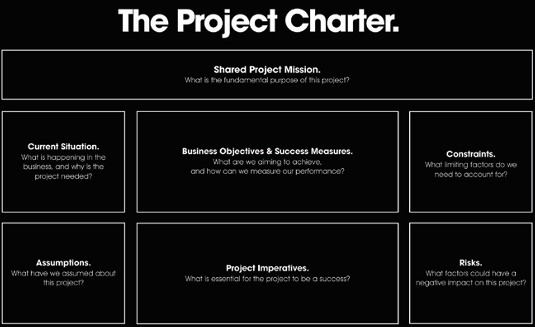
A good exercise to run with a client early on is the 'project charter' definition. This is especially helpful if the brief you've been provided is inadequate or has some clear holes.
The project charter
The charter is designed to capture the most important information about the project. The document should serve as the guiding tool for the duration of the project, consisting of:
- The shared project mission. What is the fundamental purpose?
- Measure objectives and success. What are we aiming to achieve and how can we measure our performance?
- Project imperatives. What is essential for the project to be a success?
- Current situation. What is happening in the business? Why is the project needed?
- Assumptions. What have we assumed?
- Constraints. What limiting factors do we need to account for?
- Risks. What factors could have a negative impact on this project?
Ideally, you'll have a fair amount of information already from your early discussions in the sales stage so pre-populating will help prompt discussion and speed the process up. Encourage your client to stick it up on their wall so it's always front of mind and not lost in a larger document somewhere. It'll also be a constant referral point for both sides if and when a stakeholder attempts to sway the project in the wrong direction or take you off brief. We all know that can happen occasionally.
Cut the jargon
I was once introduced in a meeting like this: "This is our UX director, Tom, he'll be responsible for defining the UX and IA and will be leading the UAT right through to deployment" , to which the client asked, "Sorry, what is it you do?" For the most people reading this, my introduction makes perfect sense.

However, the majority of people you are working for are not web professionals. In that situation the client was honest enough to admit they had no idea what any of those things meant, forcing us to re-introduce my role and in what capacity I would be working with them. Unfortunately, not every client will have the confidence to alert you at such an early stage and may fudge their way through a meeting, not wishing to draw attention to their lack of knowledge. This will undoubtedly cause both parties problems along the way as misunderstanding gradually creeps into the relationship.
Try to avoid using industry jargon as much as possible. Despite what you may think, using jargon doesn't make you appear smarter to your clients. As David Ogilvy once said, "Our business is infested with idiots who try to impress by using pretentious jargon."
Rather than talking about IA, describe the process in everyday terms, find a suitable analogy that helps the client draw a picture in their heads or better still show them real examples of previous work. Explain the purpose of this phase of work, why it's required, what's involved, and benefits it provides.
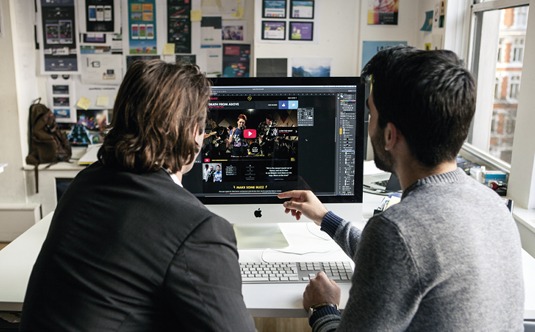
Removing the ambiguity from crucial terms you use will also ensure a smoother ride. We've all heard the dreaded, "I didn't know what sign off meant", weeks after you've coded up your previously approved designs and, to be fair, unless it was clearly explained at the time, it's a justified comment to receive.
Don't leave your clients behind
It's all well and good kicking things off the right way but what happens once the project is in full flow? This can sometimes be the most concerning time for clients as there can be long periods of time in-between meetings and presentations without any updates.
A good way of keeping them on board is to invite them into your studio space at a few key points during the project's main production phase. These should be fairly informal sessions where one or two of the client's project team drop in and review work in progress. They will usually find this rewarding, seeing you in action, and it's a great opportunity for them to chip in with their views whilst you're still developing the solution.
Drop in sessions
If you do decide to invite clients into your office at key points in the development of the project, try doing the following to get the most from client drop-in sessions:
- Demonstrate the creative steps you've undertaken so far by showing the client examples of any sketches, wireframes, designs prototypes you've worked on.
- Introduce different members of the team who have been involved in the project at various levels, such as developers, designers and animators. This will help the client understand the combined skill sets that are utilised throughout a project and create a connection with the wider team.
- Use the time to have an informal catch up with the client about any concerns or issues they may have that haven't been shared in more formal situations. This can work to your advantage in overcoming problems early.
- Take them for lunch or a beer after. If you can spare the time and you think they're worth it, it's always good to offer a bit of extra love.
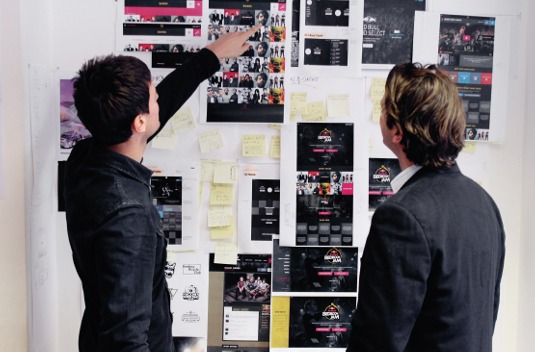
Be prepared to adjust
Hopefully what I've illustrated here is that there's not an exact approach that works for all. You need to invest the time to understand your client's knowledge level, ways of working and preferences and then mould your approach to the relationship management around them.
A great way to assess your approach along the way is to have a few informal calls on a one-to-one level with your client to gain feedback on your presentations, workshops, meetings, webinars and conference calls. This will enable you to learn and make any adjustments to your methods as you go.
Don't forget to plan your next journey
Of course the fundamental point to all this is that you build a lasting relationship with your clients and one that should result in further work. If you've delivered great work, your client's happy and you've taken them along for the ride with you, then you'll be in a much better position to start planting the seeds for your next journey together.
Words: Tom Dougherty
Tom Dougherty is user experience director at Delete. He has a background in interactive design and has led the UX on a wide range of projects for clients such as Red Bull, Expedia and IKEA. This article originally appeared in net magazine issue 253.

Thank you for reading 5 articles this month* Join now for unlimited access
Enjoy your first month for just £1 / $1 / €1
*Read 5 free articles per month without a subscription

Join now for unlimited access
Try first month for just £1 / $1 / €1

The Creative Bloq team is made up of a group of art and design enthusiasts, and has changed and evolved since Creative Bloq began back in 2012. The current website team consists of eight full-time members of staff: Editor Georgia Coggan, Deputy Editor Rosie Hilder, Ecommerce Editor Beren Neale, Senior News Editor Daniel Piper, Editor, Digital Art and 3D Ian Dean, Tech Reviews Editor Erlingur Einarsson, Ecommerce Writer Beth Nicholls and Staff Writer Natalie Fear, as well as a roster of freelancers from around the world. The ImagineFX magazine team also pitch in, ensuring that content from leading digital art publication ImagineFX is represented on Creative Bloq.
